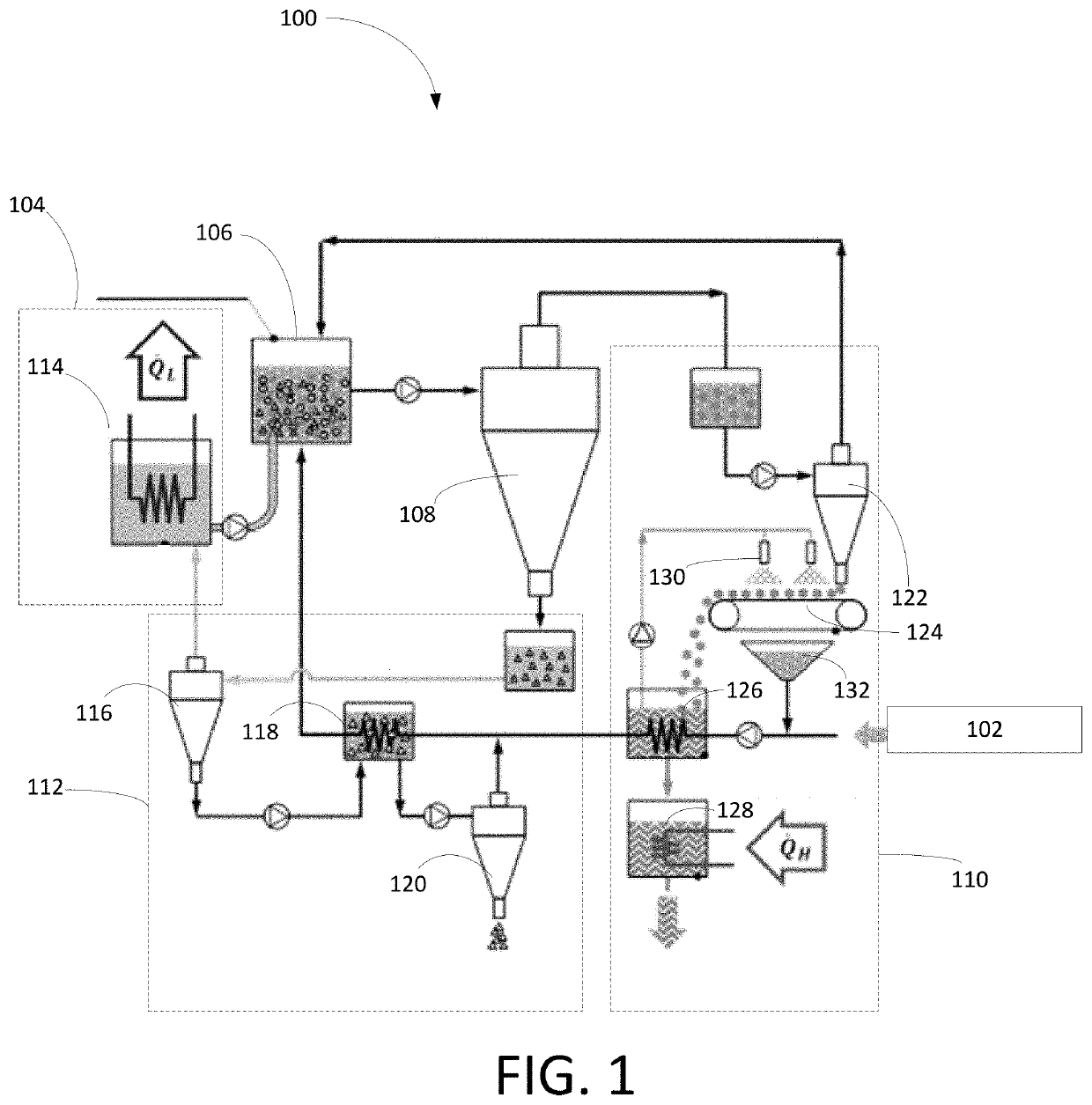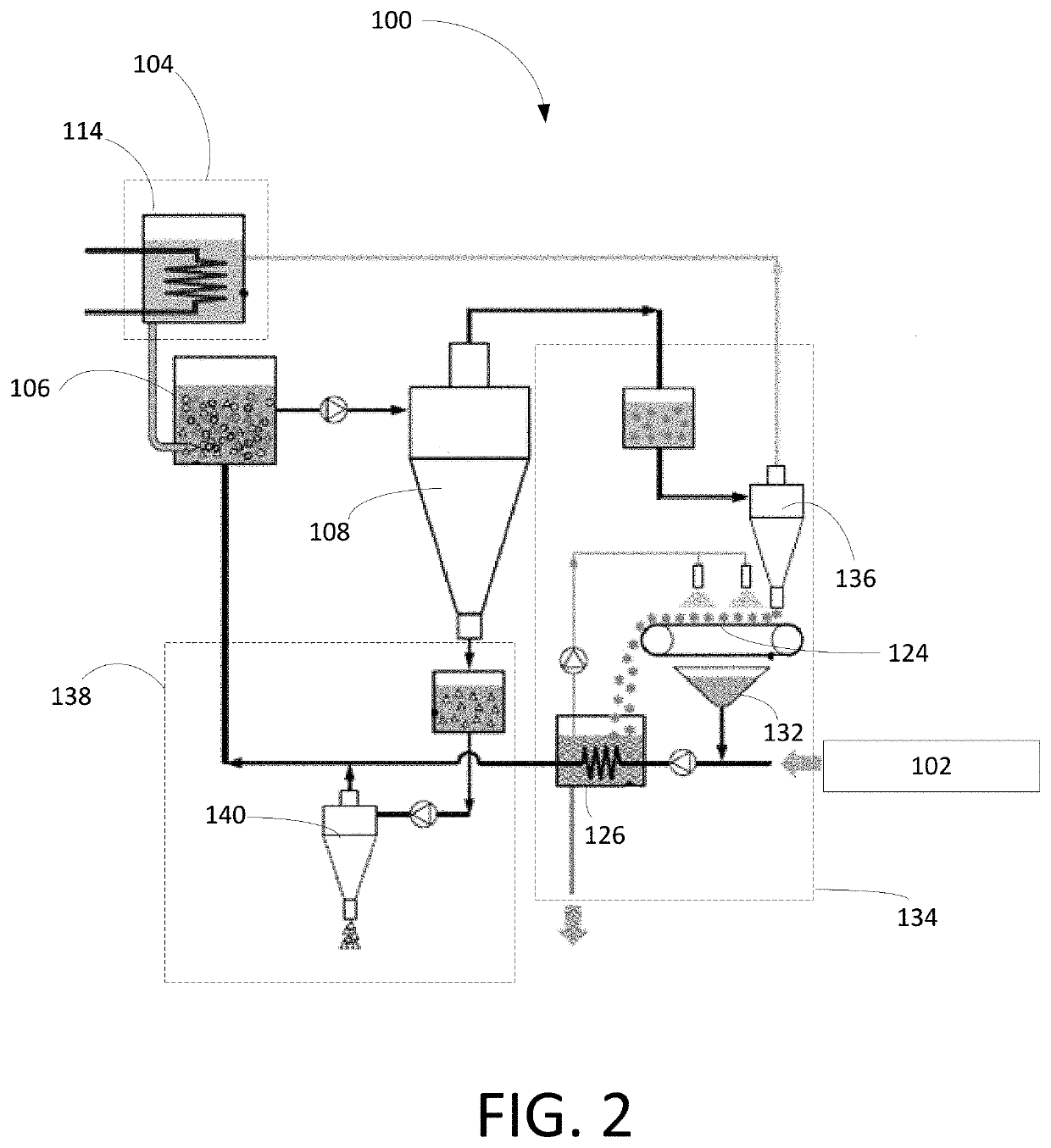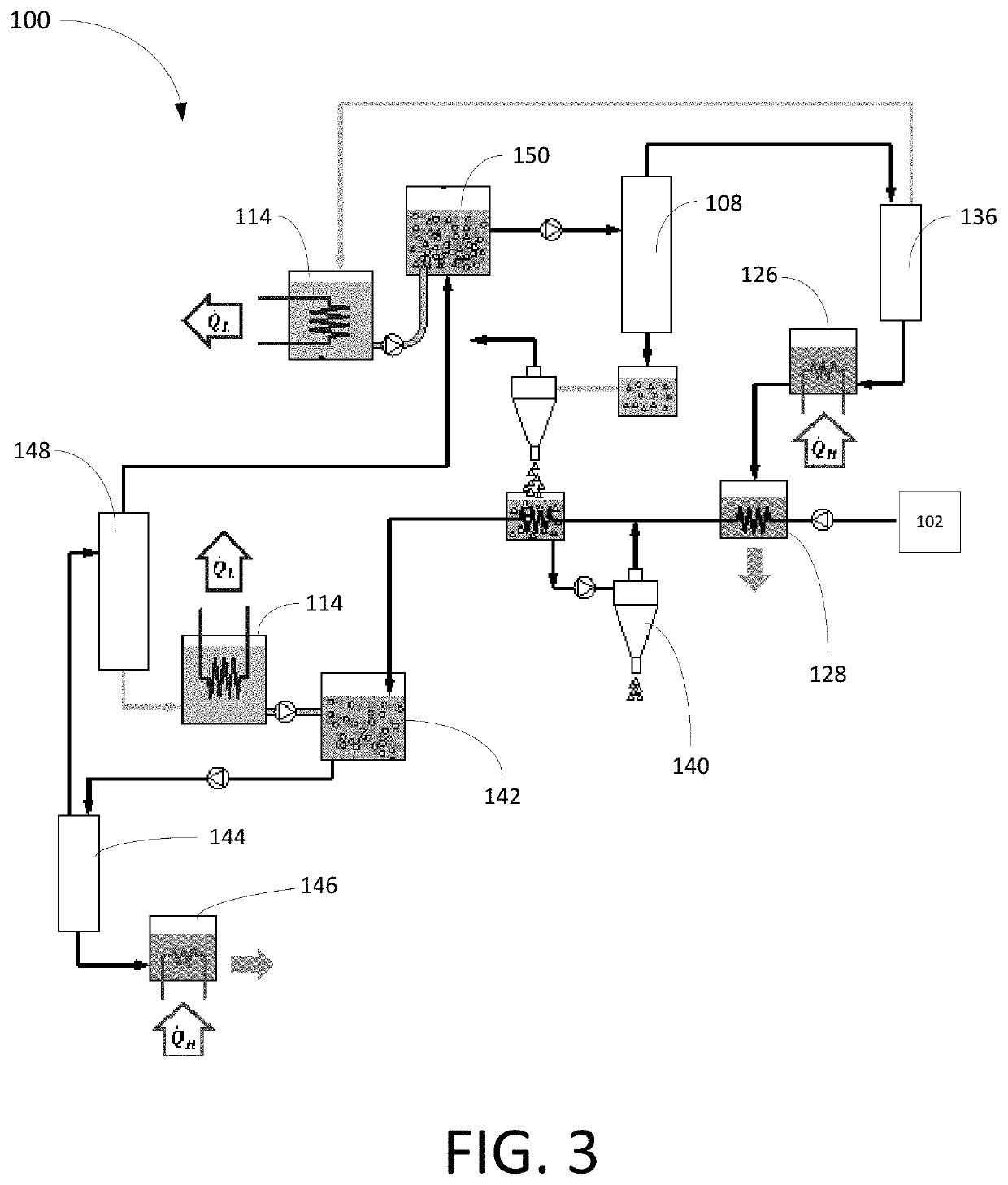Zero liquid discharge eutectic freeze desalination with intermediate cold liquid
a technology of liquid discharge and desalination, applied in the direction of water treatment parameters control, water treatment temperature conditions, water treatment compounds, etc., can solve the problems of contaminated waste water produced by modern oil and gas extraction techniques, including hydraulic fracturing, and the scarceness of fresh water resources
- Summary
- Abstract
- Description
- Claims
- Application Information
AI Technical Summary
Benefits of technology
Problems solved by technology
Method used
Image
Examples
Embodiment Construction
[0018]To address the shortcomings in the prior art, the various embodiments of the present disclosure provide a novel zero-liquid discharge eutectic-freeze desalination technology that is particularly well suited for the treatment of highly concentrated brines produced in the industrial and oil and gas sectors. In particular, the disclosed system takes advantage of the excellent heat transfer performance of direct contact freezing systems without being affected by dissolution of the refrigerant in the purified water. The combination of superior heat transfer with high quality purified water and competitive desalination economy makes the disclosed freeze desalination technology an attractive solution for desalination of highly concentrated brines produced in a variety of industries, including but not limited to the oil and gas industry and reject brine management.
[0019]Before further describing various embodiments of the present disclosure in more detail by way of exemplary descripti...
PUM
| Property | Measurement | Unit |
|---|---|---|
| temperature | aaaaa | aaaaa |
| temperature | aaaaa | aaaaa |
| temperatures | aaaaa | aaaaa |
Abstract
Description
Claims
Application Information
 Login to View More
Login to View More - R&D
- Intellectual Property
- Life Sciences
- Materials
- Tech Scout
- Unparalleled Data Quality
- Higher Quality Content
- 60% Fewer Hallucinations
Browse by: Latest US Patents, China's latest patents, Technical Efficacy Thesaurus, Application Domain, Technology Topic, Popular Technical Reports.
© 2025 PatSnap. All rights reserved.Legal|Privacy policy|Modern Slavery Act Transparency Statement|Sitemap|About US| Contact US: help@patsnap.com



